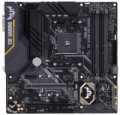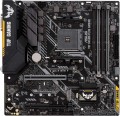Power phases
The number of processor power phases provided on the motherboard.
Very simplistically, phases can be described as electronic blocks of a special design, through which power is supplied to the processor. The task of such blocks is to optimize this power, in particular, to minimize power surges when the load on the processor changes. In general, the more phases, the lower the load on each of them, the more stable the power supply and the more durable the electronics of the board. And the more powerful the CPU and the more cores it has, the more phases it needs; this number increases even more if the processor is planned to be overclocked. For example, for a conventional quad-core chip, only four phases are often enough, and for an overclocked one, at least eight may be needed. It is because of this that powerful processors can have problems when used on inexpensive low-phase motherboards.
Detailed recommendations on choosing the number of phases for specific CPU series and models can be found in special sources (including the documentation for CPU itself). Here we note that with numerous phases on the motherboard (more than 8), some of them can be virtual. To do this, real electronic blocks are supplemented with doublers or even triplers, which, formally, increases the number of phases: for example, 12 claimed phases can represent 6 physical blocks with doublers. However, virtual phases are much inferior to real ones in terms of capabilities — in fact, t...hey are just additions that slightly improve the characteristics of real phases. So, let's say, in our example, it is more correct to speak not about twelve, but only about six (though improved) phases. These nuances must be specified when choosing a motherboard.
Max. clock frequency
The maximum RAM clock speed supported by the motherboard. The actual clock frequency of the installed RAM modules should not exceed this indicator — otherwise, malfunctions are possible, and the capabilities of the “RAM” cannot be used to the fullest.
For modern PCs, a RAM frequency of
1500 – 2000 MHz or
less is considered very low,
2000 – 2500 MHz is modest,
2500 – 3000 MHz is average,
3000 – 3500 MHz is above average, and the most advanced boards can support frequencies of
3500 – 4000 MHz and even
more than 4000 MHz.
ECC
The ability of the motherboard to work with memory modules that support
ECC (Error Checking and Correction) technology. This technology allows you to correct minor errors that occur in the process of working with data, and increases the overall reliability of the system; mainly used in servers.
M.2 connector
The number of M.2 connectors provided in the design of the motherboard. There are
motherboards for 1 M.2 connector,
for 2 connectors,
for 3 connectors or more.
The
M.2 connector is designed to connect advanced internal devices in a miniature form factor — in particular, high-speed SSD drives, as well as expansion cards like Wi-Fi and Bluetooth modules. However, connectors designed to connect only peripherals (Key E) are not included in this number. Nowadays, this is one of the most modern and advanced ways to connect components. But note that different interfaces can be implemented through this connector — SATA or PCI-E, and not necessarily both at once. See "M.2 interface" for details; here we note that SATA has a low speed and is used mainly for low-cost drives, while PCI-E is used for advanced solid-state modules and is also suitable for other types of internal peripherals.
Accordingly, the number of M.2 is the number of components of this format that can be simultaneously connected to the motherboard. At the same time, many modern boards, especially mid-range and top-end ones, are equipped with
two or more M.2 connectors, and moreover, with PCI-E support.
M.2
Electrical (logical) interfaces implemented through physical M.2 connectors on the motherboard.
See above for more details on such connectors. Here we note that they can work with two types of interfaces:
- SATA is a standard originally created for hard drives. M.2 usually supports the newest version, SATA 3; however, even it is noticeably inferior to PCI-E in terms of speed (600 MB / s) and functionality (only drives);
- PCI-E is the most common modern interface for connecting internal peripherals (otherwise NVMe). Suitable for both expansion cards (such as wireless adapters) and drives, while PCI-E speeds allow you to fully realize the potential of modern SSDs. The maximum communication speed depends on the version of this interface and on the number of lines. In modern M.2 connectors, you can find PCI-E versions 3.0 and 4.0, with speeds of about 1 GB / s and 2 GB / s per lane, respectively; and the number of lanes can be 1, 2 or 4 (PCI-E 1x, 2x and 4x respectively)
Specifically, the M.2 interface in the characteristics of motherboards is indicated by the number of connectors themselves and by the type of interfaces provided for in each of them. For example, the entry "3xSATA / PCI-E 4x" means three connectors that can work both in SATA format and in PCI-E 4x format; and the designation "1xSATA / PCI-E 4x, 1xPCI-E 2x" means two connectors, one of which works as SATA or PCI-E 4x, and the second — only as PCI-E 2x.
Audiochip
The model of the audio chip (a module for processing and outputting sound) installed on the motherboard. Data on the exact name of the sound chip will be useful when looking for detailed information about it.
Modern "motherboards" can be equipped with fairly advanced audio modules, with high sound quality and extensive features, which makes them suitable even for gaming and multimedia PCs (although professional audio work will still most likely require a separate sound card). Here are the most popular modern audio chips:
Realtek ALC887,
Realtek ALC892,
Realtek ALC1150,
Realtek ALC1200,
Realtek ALC1220,
Realtek ALC4050,
Realtek ALC4080,
Supreme FX.
USB C 3.2 gen1
The number of
USB-C version 3.2 gen1 connectors provided on the back of the motherboard.
USB-C is a relatively new type of connector used in both portable and desktop PCs. It has a small size and a convenient double-sided design, thanks to which the plug can be inserted into the connector in either direction. And version 3.2 gen1 connectivity (formerly known as USB 3.1 gen1 and USB 3.0) allows you to work at speeds up to 4.8 Gbps. In addition, when using this version with a USB-C connector, this port can implement USB Power Delivery technology, which allows you to supply power up to 100 W to external devices (although not every USB-C 3.2 gen1 port on motherboards supports Power Delivery).
As for the quantity, modern motherboards almost never have more than one USB-C 3.2 gen1 connector. This is related to two things. Firstly, not many peripherals with a USB-C plug are available for desktop PCs — full-sized USB A are still more popular; secondly, many manufacturers prefer USB-C ports of more advanced versions — 3.2 gen2 and 3.2 gen2x2 (see below). Also note that in addition to the connectors on the rear panel, connectors on the board itself (more precisely, ports on the case connected to such connectors) can also provide a USB connection. See below for more on this.
USB C 3.2 gen2
The number of
USB-C 3.2 gen2 connectors provided on the back of the motherboard.
USB-C is a relatively new type of connector used in both portable and desktop PCs. It has a small size and a convenient double-sided design, thanks to which the plug can be inserted into the connector in either direction. And version 3.2 gen2 connectivity (formerly known as USB 3.1 gen2 and USB 3.1) is capable of operating at speeds up to 10 Gbps and supports USB Power Delivery technology, which allows you to supply power to external devices up to 100 watts. However, the presence of Power Delivery should be specified separately, this function is not mandatory.
As for the quantity, most often there is only one such port, only a few motherboard models have two USB-C 3.2 gen2 connectors. This is due to the fact that not so many peripherals with a USB-C plug are produced for desktop PCs — full-sized USB A are still more popular. Also note that in addition to the connectors on the rear panel, connectors on the board itself can also provide a USB connection (more precisely, ports on the case connected to such connectors). See below for more on this.

